Hi there,
For this last blog post of the season, we summarize our work with numbers and photos to give you an idea of our field camp and the life/work on the ice sheet.
This summer fieldwork can be summarized as:
Weather and camping:
- 18 days spent on the ice including 16 sunny days and 2 overcast days
- Daily air temperature near 0°C in average with our coldest nights at -15°C
- Only 2 inches of snowfall (compared to 60 inches gotten last spring!)
- 200 dehydrated meals were eaten, about one per person and per day – favorite flavors: chicken teriyaki and lasagna.
- ~30 liters of water melted from snow every day for cooking and drinking
- 1 hot water bottle per team member to warm up the sleeping bag at night
- 1 refreshing hair wash per team member in 18 days, using 0°C aquifer water!
Science:
- A total of 200 km driven with the snowmobile to commute between sites and do radar surveys
- 3 slings load transported by BlueWest helicopters which contained ~5,000lbs of equipment (science gear + camping equipment) from Kulusuk onto the ice sheet
- ~100 km of GPR data total was collected to image the water table
- ~1850 hammer swings, used as seismic source, were performed, spread out over 18 seismic lines. It was enough to bend the metal plate!
- A stack of 30 hammer swings at the same location allowed us to get a return from the bedrock about 2,600 feet (~800 m) below the snow surface!
- A 55-m firn/ice core successfully extracted using a new lightweight (50lbs) thermal drill developed by Jay Kyne
- Water samples collection and hydraulic conductivity measurements were made at 2 different locations
- 21 liters of water including aquifer water and melted firn samples, which were collected for dating and understanding the timing of the aquifer formation and evolution
- ~8 magnetic resonance soundings (MRS) were performed along an elevation gradient to calibrate the GPR signal
- 6 liters of water per minute were pumped out of the aquifer during 3 hours to make a significant lowering of the water table level. This represents a total of 1300L of water brought up at the surface.
- Simultaneous seismic, MRS, GPS and GPR data were collected, allowing direct comparison between the different geophysical approaches
- The iWS station from Univ. of Utrecht was relocated next to one of the logging station
- 2 logging stations were installed to monitor 4 variables: water table height, firn and ice temperature, air temperature, firn compaction…
And that is about it for the 2015 fieldwork! Our team will spend fall working on the data at their labs, and we will be back into the field next year in the spring (May/June).
We hope you are enjoying the blog posts and we would like to thank you all very much for following this work! See you all next year!
Best wishes,
Clem
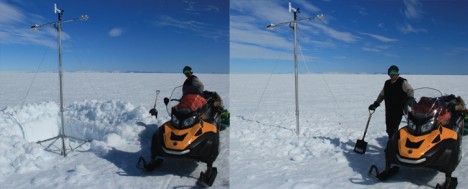
Anatoly posing next to the iWS from the University of Utrecht before and after backfilling the 2-feet deep snow pit.

Left: Lynn and I posing at the front of the container after putting the snowmobile inside. Right: gear in the container, ready to over winter.
Tags: cryosphere, drilling, Greenland, Greenland Aquifer Expedition 2015, ice






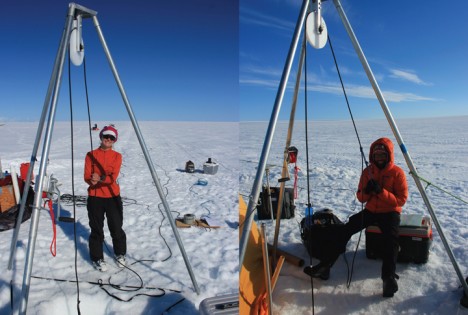
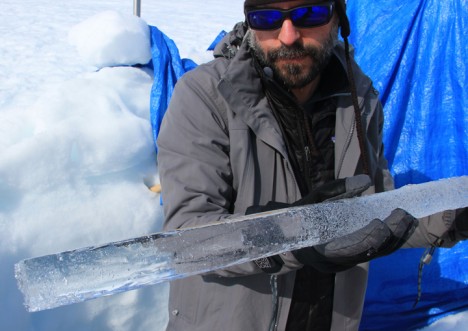
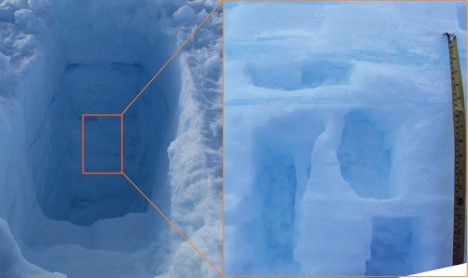
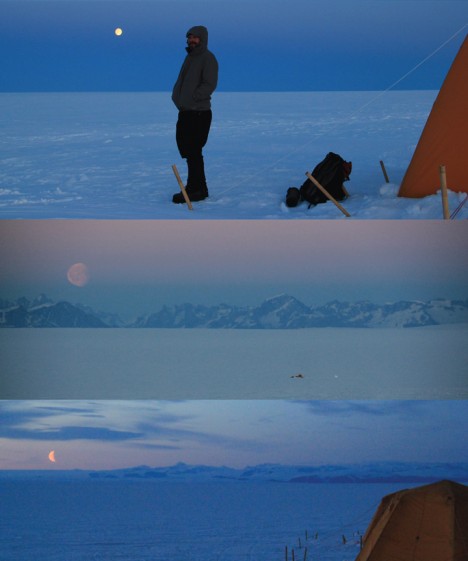
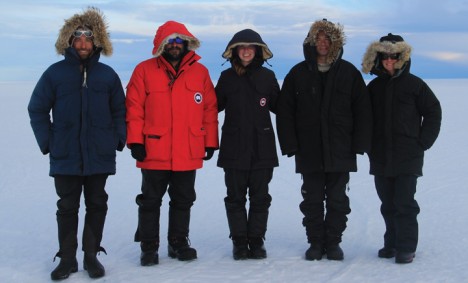
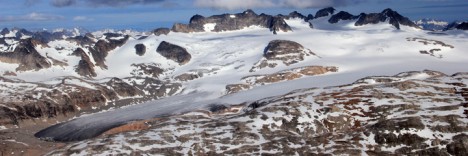


What is a firn?
Firn is the top layer of unconsolidated snow on a glacier. This top layer is granular snow much like the snow you see elsewhere. But as you get deeper the snow turns into ice.
Great information. Thank you all for everything that you do.
Keep up the fantastic work.
Thank you!
so, it seems like Greenland would be windy all the time out on the ice cap? Do you all need to spend lots of time building snow/ice walls around your tents when you arrive? Did you ever have full days with no wind? While I see in the images above, your tents are well staked into the snow I would have thought you’d need snow walls due to extreme winds?
Great Moonrises I bet!
thx in advance for any response.
Hi Andy,
In the spring, we did have strong winds, those are called katabatics winds and in Greenlandic they called them Piteraqs, going down glacier.
But in the summer, the winds were not has strong and a few times we did have almost no wind, which was nice! If your tent is well anchored, it resists well to 20-knot winds (or more) without a snow walls. But I agree snow walls could be important to add protection, however, the height of the snow wall and the distance between the snow wall and your tent are critical to minimize snow drift.